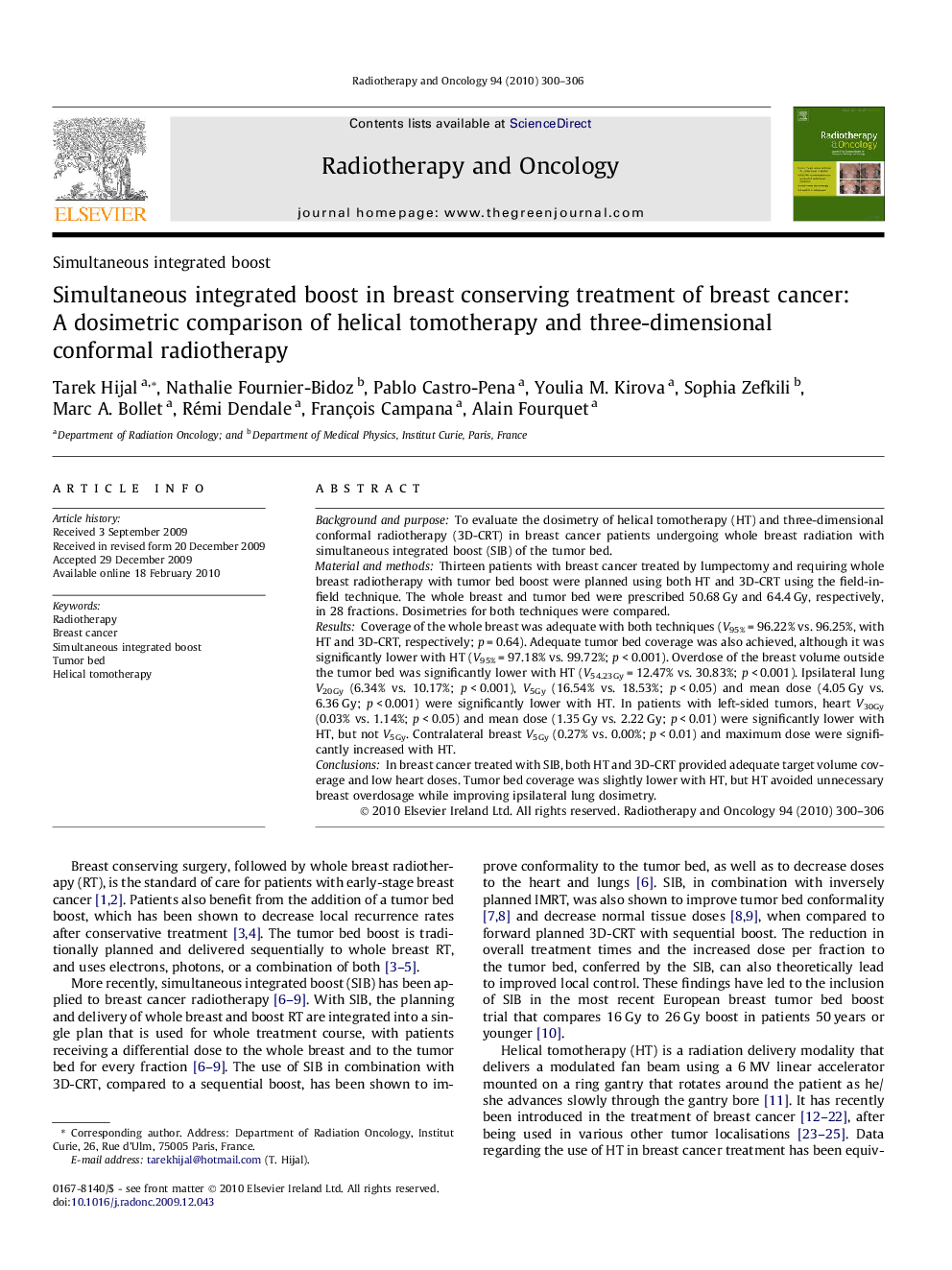| Article ID | Journal | Published Year | Pages | File Type |
|---|---|---|---|---|
| 2159491 | Radiotherapy and Oncology | 2010 | 7 Pages |
Background and purposeTo evaluate the dosimetry of helical tomotherapy (HT) and three-dimensional conformal radiotherapy (3D-CRT) in breast cancer patients undergoing whole breast radiation with simultaneous integrated boost (SIB) of the tumor bed.Material and methodsThirteen patients with breast cancer treated by lumpectomy and requiring whole breast radiotherapy with tumor bed boost were planned using both HT and 3D-CRT using the field-in-field technique. The whole breast and tumor bed were prescribed 50.68 Gy and 64.4 Gy, respectively, in 28 fractions. Dosimetries for both techniques were compared.ResultsCoverage of the whole breast was adequate with both techniques (V95% = 96.22% vs. 96.25%, with HT and 3D-CRT, respectively; p = 0.64). Adequate tumor bed coverage was also achieved, although it was significantly lower with HT (V95% = 97.18% vs. 99.72%; p < 0.001). Overdose of the breast volume outside the tumor bed was significantly lower with HT (V54.23Gy = 12.47% vs. 30.83%; p < 0.001). Ipsilateral lung V20Gy (6.34% vs. 10.17%; p < 0.001), V5Gy (16.54% vs. 18.53%; p < 0.05) and mean dose (4.05 Gy vs. 6.36 Gy; p < 0.001) were significantly lower with HT. In patients with left-sided tumors, heart V30Gy (0.03% vs. 1.14%; p < 0.05) and mean dose (1.35 Gy vs. 2.22 Gy; p < 0.01) were significantly lower with HT, but not V5Gy. Contralateral breast V5Gy (0.27% vs. 0.00%; p < 0.01) and maximum dose were significantly increased with HT.ConclusionsIn breast cancer treated with SIB, both HT and 3D-CRT provided adequate target volume coverage and low heart doses. Tumor bed coverage was slightly lower with HT, but HT avoided unnecessary breast overdosage while improving ipsilateral lung dosimetry.
